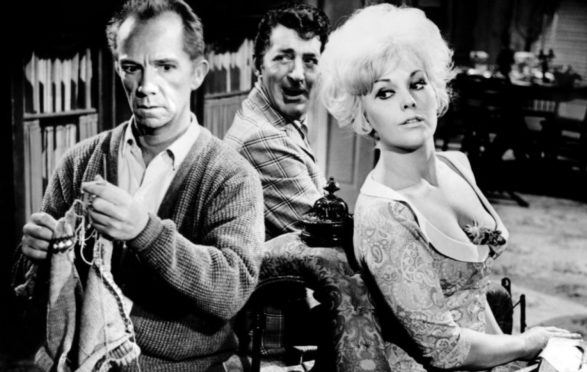
Knitting in Scotland was once dominated by men, according to research.
The craft, first recorded in the Far East, can trace its history in Scotland back to the 15th Century.
Rosie Thorp, an archives officer for Historic Environment Scotland (HES) studying the story of knitting, said the art quickly became a means of earning a living for many Scots, but it was years before women or children became involved.
She said: “In the early days of knitting in Scotland, it was very male dominated. What we now consider a quarantine hobby was seen as a highly skilled trade, done by trained craftsmen belonging to guilds or incorporations.
“However, by the 17th and 18th Centuries knitting was a flourishing trade in Scotland and a key occupation for many – women, children and men. They produced everything from jumpers to gloves to underwear. Some products were even exported overseas or traded with passing merchant vessels.
“Some in Shetland traded their knitwears with passing Dutch ships for resources including tea and sugar. In 1793, Aberdeen exported about 76,000 dozen pairs of hand-knitted stockings, primarily to the Netherlands.”
Rosie is investigating the origins of knitting in Scotland through the HES archives. Among the treasures she has unearthed are images of Scots knitting and wearing knitted items through the centuries.
One of the earliest records, she said, showed the formation of a trade guild in 1496 by Dundee bonnet makers: “One of their significant outputs was knitted caps, which had the fibres ‘felted’ together to make them waterproof. They were known as ‘blue bonnets’ and were common workwear for Scottish labourers.
“Interestingly, in the way many view tartan today as quintessentially Scottish, it was the blue bonnet that represented the nation in the 18th Century.”
Knitting, she said, became popular among women in Scottish fishing communities, particularly on the east coast.
She said: “Many women made knitted jumpers for the fishermen during the 18th Century. These are often known as ‘gansey’ jumpers and were traditionally dark-blue and tight-fitting for warmth. As their popularity spread, different patterns developed.”
The research spans the centuries from early “flat knitting” using cotton instead of wool or yarn through the introduction of knitting machines in the 16th Century and the establishment of framework knitting at Haddington, East Lothian, in 1681, to the development of towns such as Hawick in the Borders as a national centre for machine-knitted goods when technology developed in the 19th Century and the present day.
Her work also highlights Scotland’s regional variations, including the Fair Isle-style and Sanquhar Knitting, developed in the Ayrshire village in the 18th Century.
Rosie added: “Fair Isle experienced a surge of popularity in the 1920s, partly due to the Prince of Wales wearing a sweater as part of his golfing clothes.
“It is now one of the most well-known patterns for knitwear in the world. A hand-knitted Fair Isle jumper is a treasure to own.”
She said knitting only became a fashionable hobby for Scottish women from the 1830s, when “knitting books and the sharing of knitting patterns grew in popularity”.

Enjoy the convenience of having The Sunday Post delivered as a digital ePaper straight to your smartphone, tablet or computer.
Subscribe for only £5.49 a month and enjoy all the benefits of the printed paper as a digital replica.
Subscribe